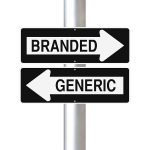As of today, 13 novel drug names have been approved by the FDA in 2023. And of those 13 names there are already a few noticeable patterns, including, well, a heavy use of Z as a focal letter (Rezzayo, Zynyz, Zavzpret and Brenzavvy), and three approvals of J-prefix names like Joenja.
But what stands out most is a pattern in brand strategy. While linking to your nonproprietary name may be a challenge as a strategic approach in brand naming (naming agencies like Brand Institute are aware of the specific guidance towards nonproprietary name use), these FDA approvals alone are a significant identifier that 2023 is the year of nonproprietary name as inspiration.
Some of the more obvious nonproprietary linkages in 2023 brand names include:
- Rezzayo, where the “rez” prefix links to the prefix from rezafungin
- Zavzpret, where the “zav” prefix links to the prefix from zavegepant
- Filspari, where the “spar” infix links to the prefix from sparsentan
- Jaypirca, where the “pir” infix links to the prefix from pirtobrutinib
- Leqembi, where the entire name has encoded elements from lecanemab-irmb, including the “lec” prefix, “em” infix, and shared “b” sound
I really love the way these names are crafted, and how carefully they balance regulatory guidance with accompanying messaging.
But what are the guiderails?
EMA guidance dictates that only a certain portion of the brand name can embed a piece of the nonproprietary name within it. This isn’t just a simple word part being embedded, but even a phonetic embedding of a nonproprietary name word part (i.e., Leq and Lec are considered the same). And, conversely, regional brand names (for instance, US only) tend to have greater flexibility as it pertains to this specific regulatory consideration. So creatives and namers need to first know where the product is being marketed, and keep those guardrails in mind especially when developing a name for a global audience.
What Makes this Strategy Appealing
In my opinion, and based on experience, the nonproprietary approach is helpful for:
- Names that are being created with the HCP in mind (i.e., likely not going to have direct to consumer marketing or want it easier for the HCP to identify)
- Names with a brand new nonproprietary name, with a desire to highlight that novelty
- To feel additional ownership of the product
- Or to serve as a complementary strategy to another brand strategy such as attribute, benefit, or image exploration
And while there are many more name approvals on the horizon, it will be exciting to see which strategies are noticeable in upcoming approvals.
By Alexa Lash

